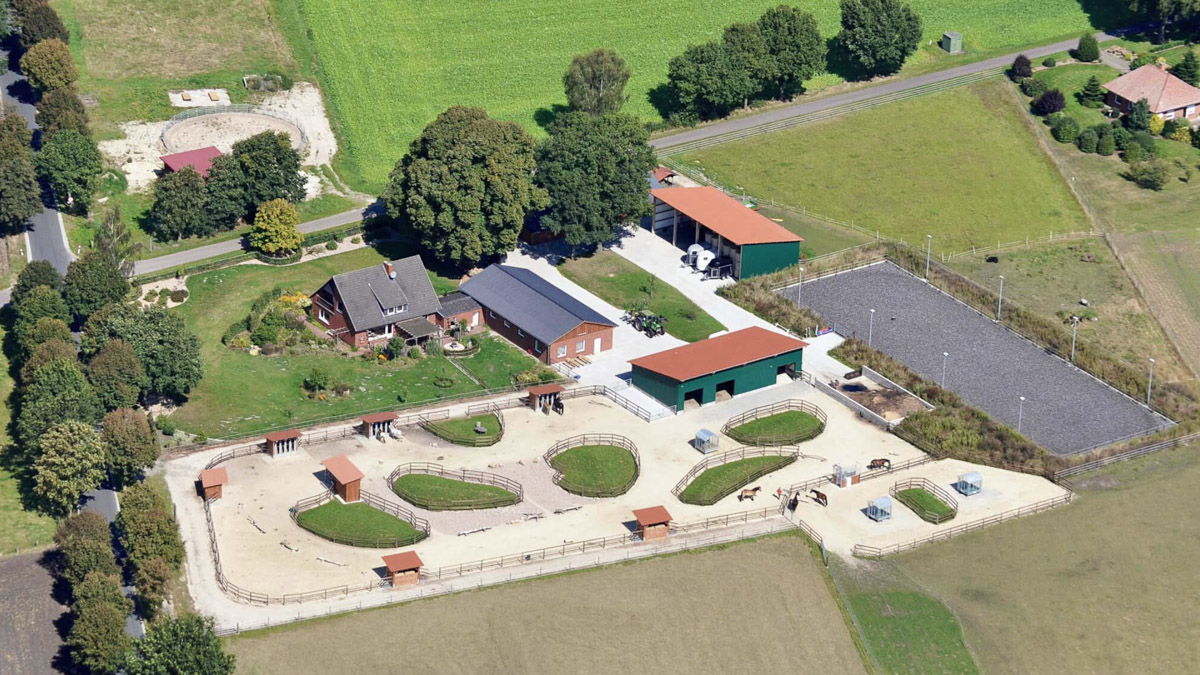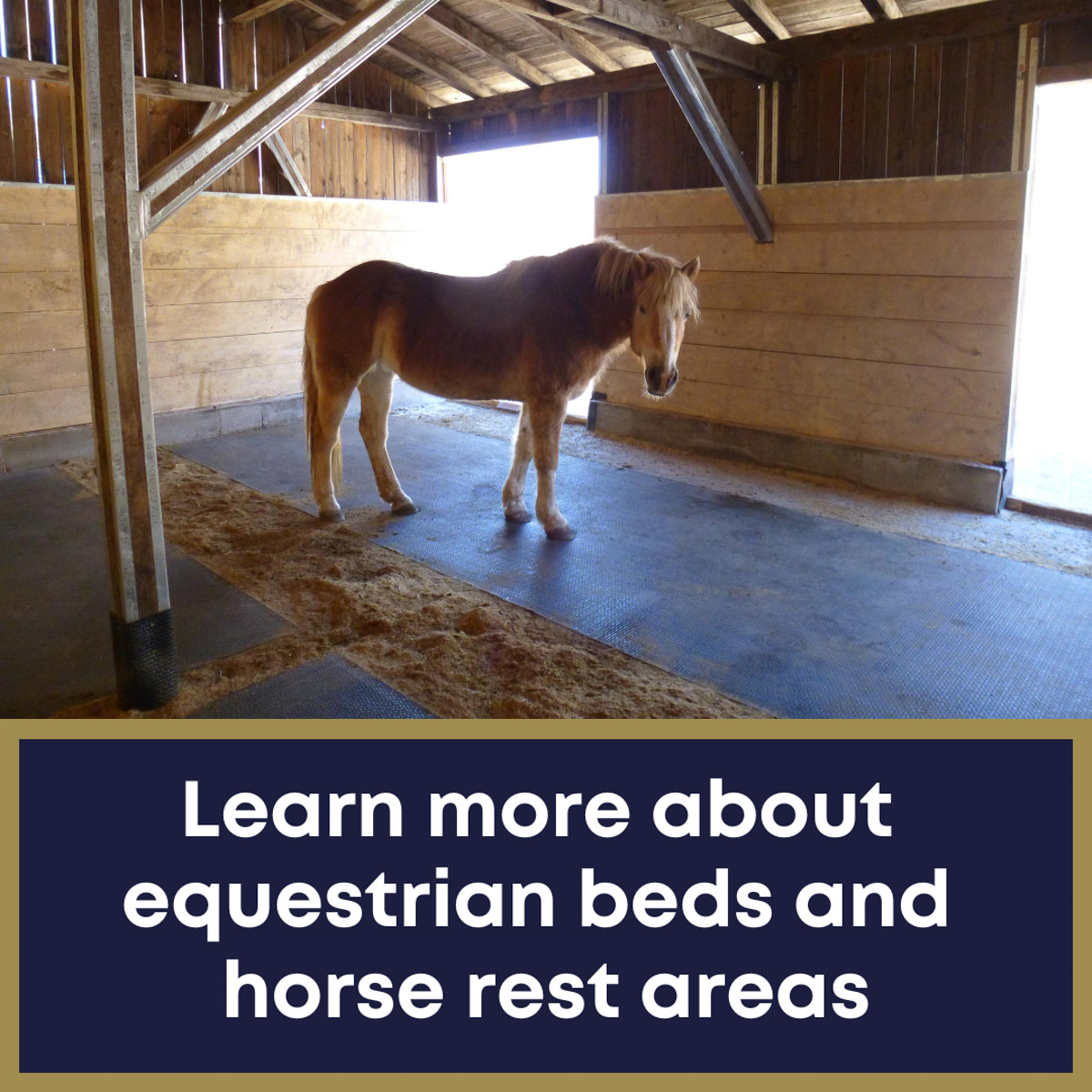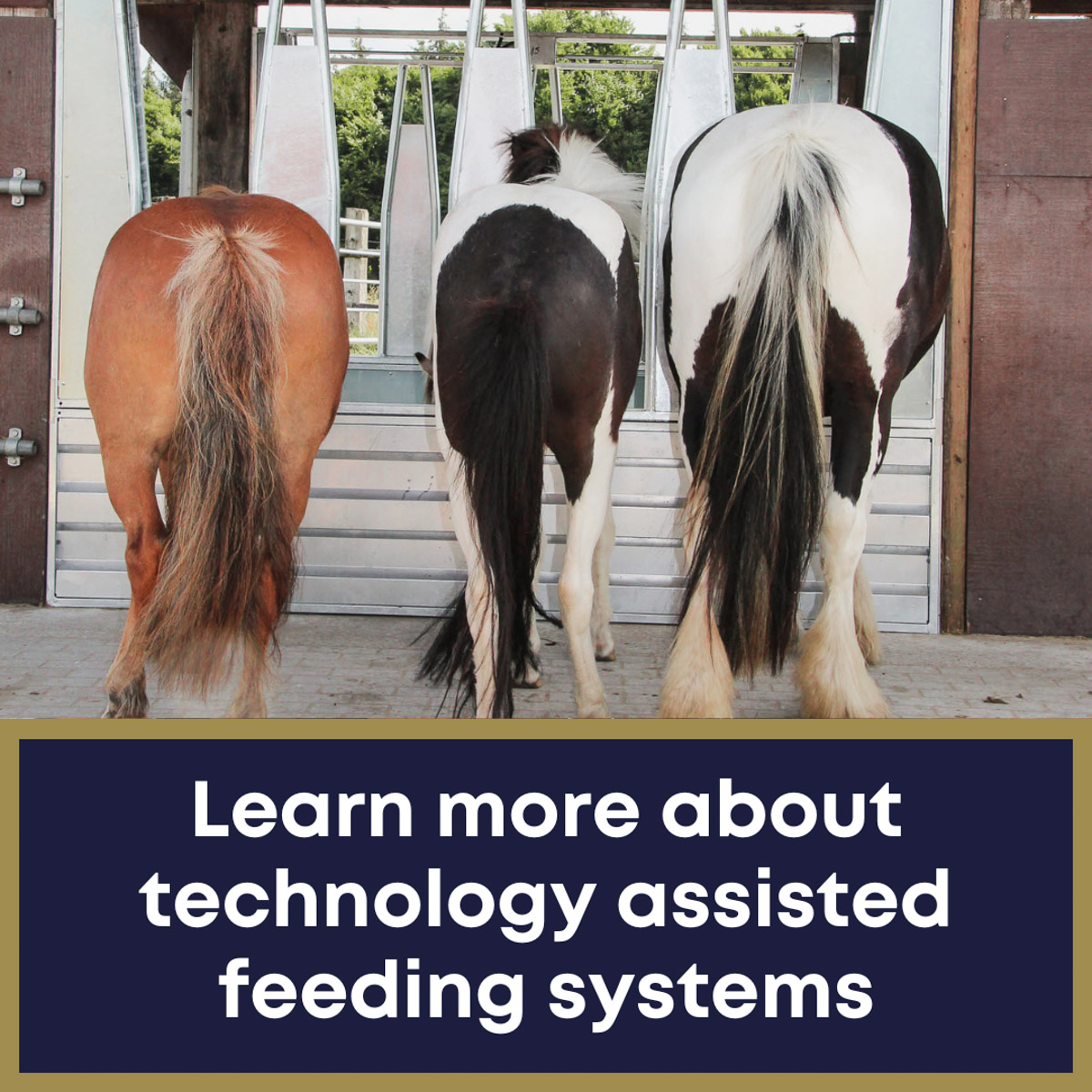What is the Future of Horse Housing?
What will horse housing look like in 2025 and beyond? Learn more about the latest advancements in horse keeping as we review the concepts of paddock paradise, box keeping and group keeping with technology.
Perceptions around horse housing and what is “good” horse welfare are shifting, and it is our vision to help horse owners create equine living spaces and infrastructure that promote not only the well-being of horses but also create efficient and time-saving processes for owners and stable staff.
Here are three different methods of horse keeping:
Traditional Stable Boxing

Today the stable box is the most widely used accommodation method for horses in work. Initially, it is believed that boxes were created to isolate horses from one another, keep them closer to us and protect them from the weather.
Scientists have now clearly established that prolonged confinement in the stable affects not only the mental well-being but also the physical health of horses. It generates a number of respiratory, digestive, locomotor and behavioural problems.
Limitations for Both Horse and Owner
The traditional box system generates work that is both arduous and labour-intensive - jeopardising the profitability of many horse-related activities.
A joint reflection is being established today between professionals, ethologists, technicians and engineer advisers, as well as infrastructure builders and equestrian architects, in order to adapt the box to new expectations in terms of well-being and functionality.

Paddock Paradise

The Paddock Paradise is a concept resulting from the empirical observation of Mustangs in a natural environment by the American farrier, Jaime Jackson, in the 80s. The causal link between the mode of accommodation and domestic food with laminitis is at the heart of its thinking. Assuming that horses from steppe environments (dry and grassy plains) apparently do not suffer from laminitis, he proposes to create a steppe-like environment for the boarding and lodging of domesticated horses.
Simulating the tracks that horses naturally create during their movements, the Paddock Paradise is built around a track of variable width which follows the perimeter of the plots with internal connections according to the chosen layout. These tracks connect the different points of interest of the stable to each other so as to encourage the horses to move around. To prevent laminitis, Paddock Paradise limits or even prohibits the consumption of grazed grass (tender), because it is a factor in its appearance. The feed is based on hay which is distributed in small mesh nets distributed along the track. The ground of the Paddock Paradise aims to provide a "natural trimming" of the foot of the horse on the abrasive elements of the ground.
Group Horse Keeping with HIT Active Stable

As with the Paddock Paradise method of group accommodation, the HIT Active Stable method of horse keeping has been designed with horse health and well-being as a priority. These two approaches tend to draw inspiration from each other and share many practices, innovations, and points of view.
There has been over 20 years of development since the first HIT Active Stable project in Germany, and this group method of horse keeping has prompted many studies into the way we keep horses today.
How does HIT Active Stable work for the future?
The herd environment meets the basic needs of the horses, and the integrated technology and infrastructure reduce workload which is a big positive for forward-thinking horse owners. Here are some of the ways that HIT Active Stable can help support happier and healthier horses while increasing work efficiency:
- The layout of the Active Stable is optimised to encourage natural and continuous movement between the different points of interest such as feeding, drinking, and resting.
- As the horses live in herds, they are individually identified by a transponder worn in the mane or neck collar, and this allows an individual and automated feeding program for every horse.
- Some Active Stable facilities give horses access to pasture where the number of horses per area can be managed with selection gates.
- Areas such as feeding, drinking, rolling, playing and resting areas have stabilised surfaces to prevent the build-up of mud which restricts the horse's natural behaviour. This also facilitates mechanical cleaning of droppings to save the horse owner time.
- Horses are able to regain a herd life and have their social needs met. Feeding stations are well spaced out and there is plenty of room so that subordinate horses do not suffer from the proximity of the dominant.
- Care is taken to enrich the environment to stimulate cognitive abilities, observation and the adaptation of horses to novelty, and the paths and trails that connect different areas often feature steps, logs, and other obstacles.
The success of an active stable is mainly due to its practical dimension, as it allows processes such as the distribution of roughage and concentrates - and manure cleaning - to be mechanised.
As humans develop a more detailed knowledge of equine behaviour, it becomes possible to adapt accommodation methods to improve the well-being of horses, the work life of professionals, and more generally the human/horse relationship.
What will the Future Look Like?
As mentioned, equine welfare is becoming an increasing concern, and things that were considered ‘normal’ 20 years ago are now being questioned and scrutinised. This threatens the equine industry as a whole and puts the sport’s ‘social licence’ to operate at risk, so it is important that all horse owners are being proactive about their horse’s welfare.
If approaches such as the Paddock Paradise or HIT Active Stable do not replace the traditional stable box environment in the UK, then we must at least aim to:
- Preserve maximum social contact between horses. (Read more about “The Importance of Social Interaction Amongst Horses”)
- Allow forage-based, fractional feeding throughout the day.
However, meeting the social, nutritional and environmental needs of horses is a huge task for stable owners, and the obvious solution remains with the concept of group horse keeping with the assistance of technology.


